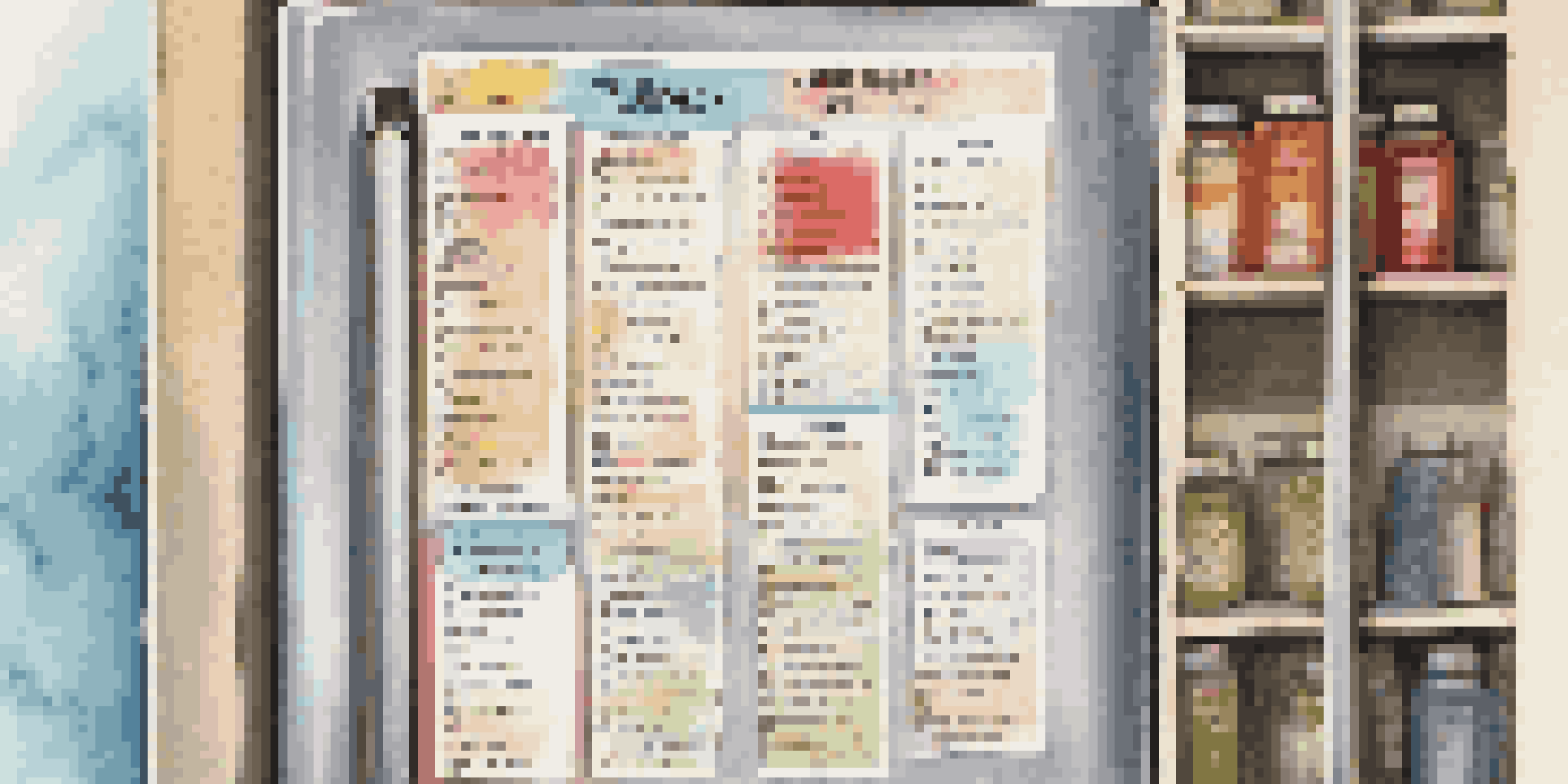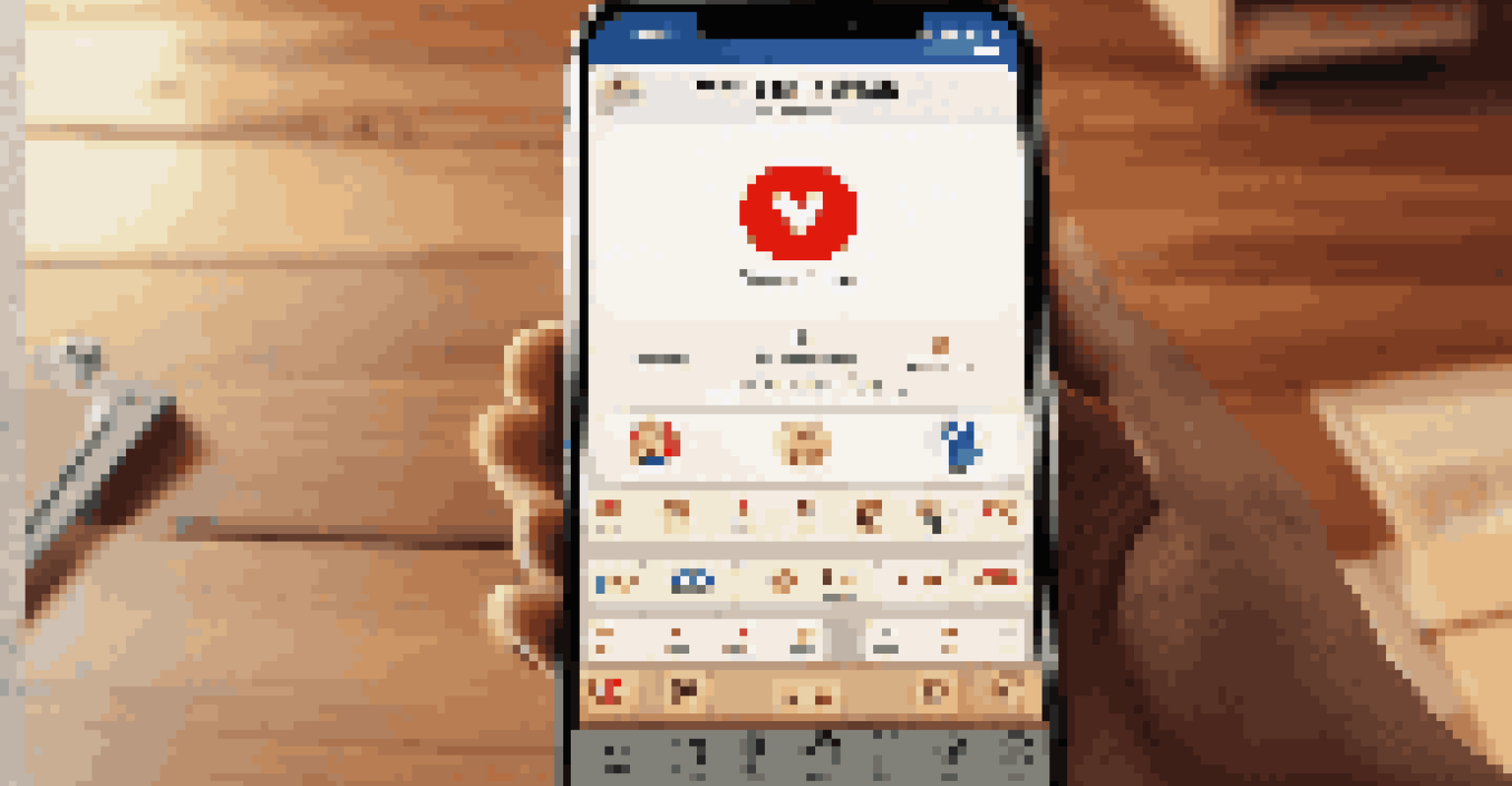Emergency Contacts: Keeping Important Numbers Handy

Understanding the Importance of Emergency Contacts
Emergency contacts are crucial for quick assistance in times of need. They can include family, friends, and local services that can help during crises. Having these numbers readily available can save precious time and potentially lives when every second counts.
In a crisis, the first step is to know who to call.
Imagine being in a situation where you need immediate help, but you can’t remember who to call. This is where a well-organized list comes into play, ensuring you’re not scrambling for numbers when it matters most. It’s all about preparation—like having a fire extinguisher ready before a fire breaks out.
Being proactive about your emergency contacts can also provide peace of mind. Knowing you have the right people to call can ease anxiety in uncertain situations, allowing you to focus on what’s happening rather than frantically searching for help.
What Numbers to Include in Your Emergency Contacts
Start with the basics: family members, close friends, and neighbors. These are the people who can offer immediate support in a crisis. It’s also wise to include contacts for local emergency services, such as the police, fire department, and medical services, as these are essential during urgent situations.

Beyond your personal circle, consider adding the contact information of your doctor or nearby hospitals. In case of a medical emergency, you’ll want to have quick access to professional care. It’s like having a safety net that can catch you when you fall.
Emergency Contacts Save Lives
Having a well-organized list of emergency contacts can provide quick assistance in urgent situations.
Don’t forget about important non-personal contacts, like your workplace or school. If an emergency arises, these organizations may need to be informed promptly. Having their numbers handy can streamline communication and ensure everyone is accounted for.
Organizing Your Emergency Contacts Effectively
Now that you know what numbers to include, it’s time to organize them. A simple way is to create a dedicated contact group on your phone labeled ‘Emergency Contacts.’ This way, you can quickly access all necessary numbers without sifting through your entire contact list.
Preparation is the key to success.
Another effective method is to write down your emergency contacts on a piece of paper and keep it in a visible place, like your fridge or wallet. Digital devices can fail, but a physical list can be a lifesaver. Think of it as a backup plan for your backup plan.
Additionally, consider using a cloud-based service or an app that specializes in storing important information securely. This way, you can access your contacts from any device, ensuring that you’re never without help when you need it most.
Updating Your Emergency Contacts Regularly
An emergency contact list is only as good as the information it contains. Regularly updating your contacts is essential to ensure you’re not reaching out to outdated numbers. Life changes, and so do our relationships and circumstances.
Set a reminder every six months to review your list. During this time, check if any phone numbers have changed or if there are new contacts to add. It’s a small task that can make a big difference in emergencies.
Regular Updates Are Essential
Consistently updating your emergency contact list ensures that you have the most current information when you need it.
Additionally, if someone on your list experiences significant life changes, like a new job or moving, make sure to update their information promptly. Keeping your contacts current is like maintaining a well-oiled machine—everything runs smoothly when all parts are in top shape.
Storing Emergency Contacts Across Multiple Platforms
While having emergency contacts on your phone is convenient, consider storing them in multiple places for added security. For example, you could keep a digital copy on your computer and a printed version in your home. This multi-platform approach helps ensure you’re covered no matter the situation.
You might also want to share your emergency contact list with trusted friends or family members. This way, they can step in to help if you’re unable to make calls yourself. It’s like having a buddy system, where everyone looks out for each other.
Using apps designed for emergency preparedness can also streamline the process. Many of these apps allow you to store important numbers and share them with others, making it easy to keep everyone informed and ready to assist.
Communicating Your Emergency Contacts to Family
It’s not enough to have your emergency contacts saved; your family and close friends should know who to call in an emergency. Take the time to discuss your list with them, ensuring everyone is on the same page. This conversation is a great opportunity to emphasize the importance of these contacts.
Holding a family meeting or casual discussion helps reinforce the idea that everyone should know how to reach each other. By sharing this information, you create a network of support that can be invaluable in times of crisis.
Technology Enhances Preparedness
Utilizing technology and apps for managing emergency contacts can streamline access and improve response times during crises.
Consider practicing different emergency scenarios where your family must use the contact list. This practice can help everyone feel more confident about what to do when the unexpected occurs. It’s like a fire drill for your emergency contacts—a little prep can go a long way.
The Role of Technology in Managing Emergency Contacts
In today’s digital age, technology plays a significant role in managing your emergency contacts. Many smartphones offer features that allow you to set up emergency contacts that can be accessed even when the phone is locked. This means that first responders can reach your trusted contacts quickly.
There are also various apps available that can help organize and manage your emergency contacts. These apps often include features like location tracking, which can be beneficial in emergencies. It’s like having a digital assistant ready to help when things go awry.

However, while technology is helpful, always remember the importance of a physical backup. Not all devices work perfectly in emergencies, so having a written list can be a lifesaver if technology fails. It’s all about blending traditional methods with modern conveniences for the best results.